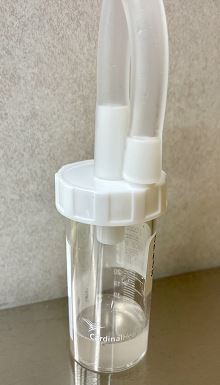A bronchoscopy is a procedure where doctors use a camera to look in the airways of the lungs. There are 2 main types of bronchoscopy:
- Rigid bronchoscopy – This test is done by Ear, Nose, and Throat (ENT) doctors. A rigid (stiff) tube with a camera is used to see the large airways of the lung. ENT doctors can use this scope to look at the upper airway (larynx) to make sure it is normal. They can use the scope to look deeper into the large airways and remove airway blockages or take biopsies.
- Flexible bronchoscopy – This test is usually done by pulmonary (lung) doctors. A small, flexible camera is used to see the large and medium size airways of the lung. This camera can also suction mucus or small airway blockages.
A bronchoalveolar lavage (BAL) is a procedure that is usually done with flexible bronchoscopy. The doctor will put small amounts of sterile salt water through the scope and into the lungs so it reaches the small air sacs (alveoli). The doctor uses suction to pull back some of the salt water to send for testing. This lung “wash” can be sent for culture to make sure there are no bacteria or other causes of infection in the lungs. Doctors can look under the microscope to see what types of cells are the lung wash. This may help the medical team learn more about your child’s lungs.
Since lung infections can look like chILD, it is common to need a flexible bronchoscopy at some point during diagnosis. Side effects of flexible bronchoscopy and BAL for most children include increased cough, lower oxygen levels, and mild bleeding. Your medical team will discuss the risks and benefits of the procedure.
Follow us on social media:
Address:
311 Elm Street
Ste C1#1045
Cincinnati OH 45202
Email: info@child-foundation.org

